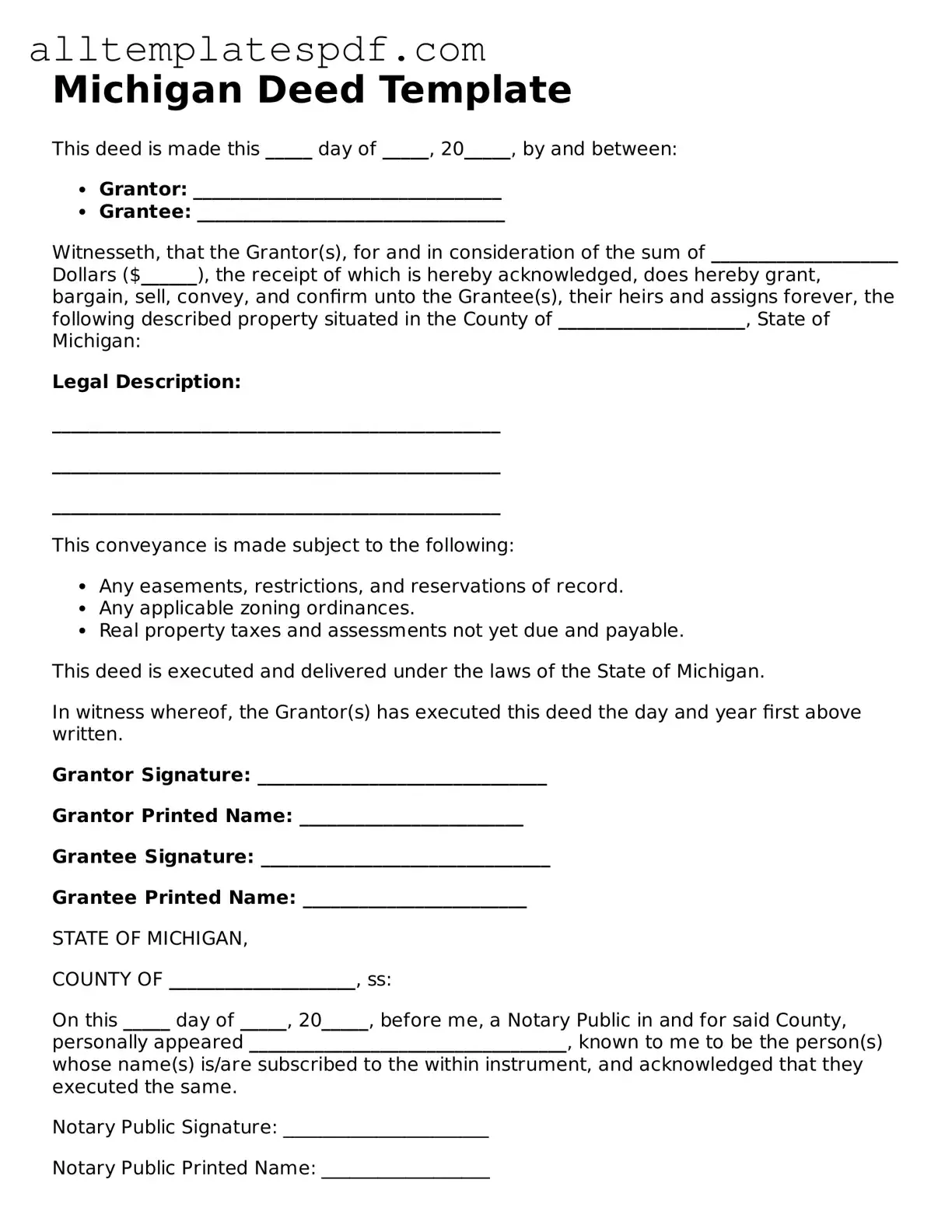Filling out the Michigan Deed form can seem straightforward, but there are common mistakes that people often make. These errors can lead to delays or complications in property transfers. Awareness of these pitfalls can help ensure a smoother process.
One frequent mistake is not providing accurate property descriptions. The deed must include a clear and precise description of the property being transferred. A vague or incomplete description can create confusion and may even invalidate the deed.
Another common error is failing to include all necessary parties. Both the grantor (the person transferring the property) and the grantee (the person receiving the property) must be correctly identified. Omitting a party or incorrectly spelling names can lead to legal issues down the line.
Many people also overlook the need for signatures. The grantor must sign the deed, and in some cases, the grantee may need to sign as well. Not having the required signatures can render the deed ineffective.
Improper notarization is another mistake that can occur. The deed must be notarized to be legally binding. If the notary does not complete their section correctly, or if the notary is not properly commissioned, the deed may not be valid.
People sometimes forget to check for any liens or encumbrances on the property. Before transferring ownership, it’s important to ensure there are no outstanding debts or legal claims against the property. Failure to address these issues can lead to future complications for the new owner.
Another mistake is neglecting to record the deed with the appropriate county office. Recording the deed is crucial for establishing public notice of the property transfer. Without this step, third parties may not recognize the new ownership, which can lead to disputes.
Some individuals may not understand the implications of transferring property as a gift versus a sale. Different tax consequences and legal responsibilities can arise depending on how the transfer is categorized. It’s essential to be clear about the nature of the transaction.
People often miscalculate the fees associated with the deed transfer. There may be recording fees, transfer taxes, or other costs involved. Not budgeting for these expenses can cause delays or even halt the process entirely.
Lastly, failing to seek legal advice can be a significant oversight. While the form may seem simple, the implications of errors can be complex. Consulting with a professional can help ensure that the deed is filled out correctly and that all legal requirements are met.
